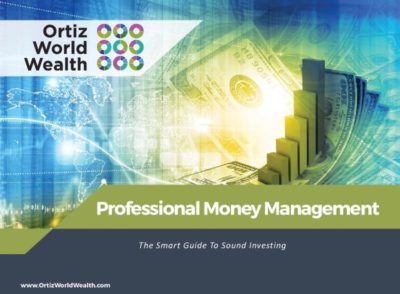
22 Apr Using a Bucket Strategy to Protect Your Retirement from Market Swings
These days, market unrest seems to have become the norm and many investors believe It’s likely to remain so—at least as long as the novel coronavirus (COVID-19) pandemic continues to sweep its destabilizing way around the globe.
After falling sharply for much of the past month, the Dow Jones rocketed up over 11% on March 24, its biggest increase since 1933. The S&P 500 jumped 9.4% as well, recouping nearly $1.8 trillion in market value, but still remained nearly $8 trillion below its mid-February high.
While the general consensus on Wall Street is that additional violent swings are still to come, there’s no need for prepared retirees to panic just yet. If you’ve properly allocated your retirement fund assets, now is a good time to remain calm, sit tight, and trust the bucket strategy to continue providing the income you need while protecting your financial future.
Dependable Income from Multiple Investments at Varying Risk
When you save for retirement using a bucket strategy, you segment your assets into different categories based on risk level, needs or expenses, or time period. It’s basically a cash distribution method that will provide you with income from your nest egg regardless of where the stock the market might be at any particular time. At Ortiz World Wealth, we utilize a four-bucket strategy.
Bucket One: Cash, Bonds, and other Stable Investments
The income you need now (and for the next two to five years) in order to maintain your current lifestyle in retirement is stored in bucket one. Because this bucket is designated to satisfy fairly short-term needs, the investments within it must be relatively stable. Good choices include cash, bonds, CDs, and money market funds.
Analysis of historical stock data has shown that mild market declines typically rebound within four or so months. Larger declines (over 20%) take a little longer, but the average is only about two years. Keep in mind that guaranteed income from Social Security will cover some of your expenses. Bucket one only needs to cover the rest long enough to give the rest of your portfolio time to recover.
Bucket Two: Dividend-Paying Stocks, Bonds, Bond Funds, and Income-Producing Alternatives
Bucket two holds three to seven years of expenses in a balanced portfolio. Investments in this portfolio typically include dividend-paying stocks, bonds, bond funds, and income-producing alternatives. Bonds have been increasing in value as the stock market has plummeted, which means that at least a portion of your portfolio stored in bucket two has actually grown. Eventually, the yield from the investments in bucket two will flow into bucket one to supply income. But as we mentioned earlier, the market is likely to have recovered before this replenishment is necessary.
Bucket Three: Stocks and Income-Producing Alternatives
Bucket three is designated for longer-term funds that won’t be needed for several years. As such, it can be invested in riskier assets such as stocks and income-producing alternatives such as hedge funds, private equity, and private credit. You’ll eventually use the investments in this bucket to replenish those in the second, but that time is a long way off. This bucket is also tactically managed.
Bucket Four: Equities and Other Volatile Assets
Finally, bucket four is comprised of equities and other assets with higher volatility such as gold and commodities as well as income-producing alternatives such as real estate. Many of these assets produce dividends that are used to replenish the third bucket.
Sticking with Your Strategy
It’s easy—and very natural—to get caught up in turbulent headlines and worry that you should be making some sort of moves rather than sitting still. But put your trust in market history and your investment plan.
Perhaps the greatest benefit of the Ortiz World Wealth four-bucket strategy is that it provides a buffer during times of market volatility such as we’re experiencing now. While the value of the investments in buckets two and three are fluctuating with market conditions, there’s still no need for you to worry. Your immediate cash income is safely tucked away in bucket one, which is designed to be less volatile. As a result, you can sit tight and wait for the assets in your remaining buckets to rebound.




Sorry, the comment form is closed at this time.